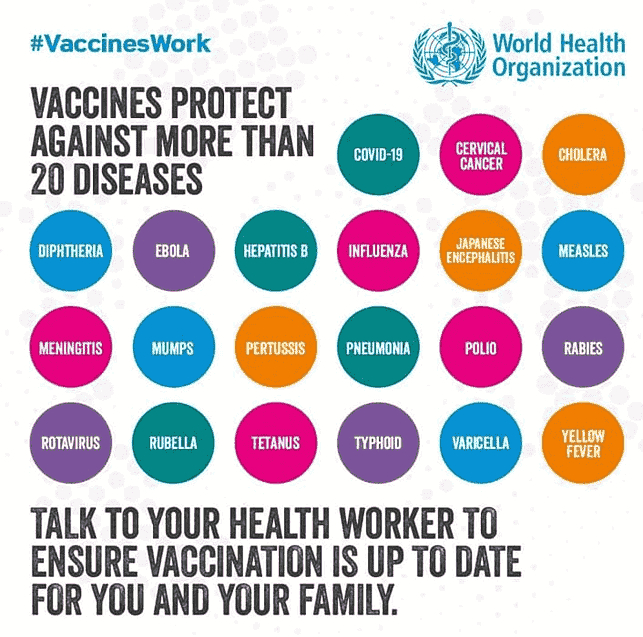
The pneumococcal-type vaccine is used to protect against pneumonias referable to bacteria.
The targets most at risk are the elderly, children within 5 years of age, and individuals with chronic conditions, those with diabetes for example, with COPD (chronic obstructive pulmonary disease) and ischemic heart disease.
Who is most responsible for these pneumonias?
.The Streptococcus Pneumoniae also more commonly called Pneumococcus.
Fraenkel's bacillus, another suggestive name for pneumococcus, is thus the major holder of pneumonia in adults. It is a Gram-stain-positive bacterium, belonging to the genus Streptococcus and formed by two cocci with the typical flame pattern derived from their union (hence also Diplococcus pneumoniae).
These bacteria usually reach the lungs by inhalation route or by aspiration. In the bronchioles they ignite an inflammatory reaction, with exudation of protein dense fluid. Following from these fluids is allowed to spread to the contiguous alveoli, leading to typical lobar pneumonia.
A bacterium this extremely important in the history of medicine, because Diplococcus pneumoniae and two of its variants, allowed Englishman Frederick Griffith in his molecular genetics experiments in 1928, to discover the "modifying factor" that science later recognized in DNA.
Other infections however are linked to pneumococcus besides lobar pneumonia: meningitis, bacteremia and sepsis, sinus infections, ear infections (otitis media). There are more than 90 types of pneumococcus, and in addition to chronic diseases (heart disease, diabetes, etc.) other problems affect the risk of developing infections such as: use of certain drugs (such as corticosteroids and chemotherapy), absence of a functioning splenic organ (commonly called spleen), anemia, smoking, immune-deficient diseases (HIV), and alcoholism.
The pneumococcus is a disease that can be transmitted by the immune system.
But it is chronic bronchitis, particularly in elderly individuals, that can be a key aid to the infectious development of this bacterium.
Children (the elderly over 65 years of age) particularly under 5 years of age and from 6 months of age are the preferred target for this bacterium, and therefore pneumococcal infections are an important, serious public health problem. Children then are not yet able in terms of the hypothesis to develop antibodies to the polysaccharide antigens of the bacterium.
In developing nations pneumococcus is then with its resulting dangerousness facilitated by the country's poor sanitation conditions.
Pneumococcal infections are due in most cases to one or several bacteria in particular 12 serum groups: 1,3,4,5,6,7,8,9,14,18,19,23. In children, however, we can identify 4,6,9,14,18,23 as most common.
But it is appropriate to return to the topic of individuals over the age of 65 and with chronic diseases, and in any case also to children under the age of 5.
Vaccine-type policy as prevention today is definitely the most indicated efficient and safe. We have two types of reality to vaccinate: polysaccharide 23-valent in children over 2 years old and adults, the conjugate 13-valent in children and adults, which replaces the conjugate that was targeted against 7 types of pneumococcal bacteria included in preventive practice since 2002.
The PVC13-valent vaccine is the most effective vaccine.
The PVC13 vaccine is inactivated, starting with the protein-bound fragment of the microorganism that enhances efficacy (infants, children up to 5 years of age and adults at high risk, serotypes 1-3-4-5-6A-7F-9V-14-18C-19A-19F-23F) is administered by intramuscular injection. It is not part of the mandatory vaccinations, but offered and recommended with hexavalent vaccine (diphtheria, pertussis, tetanus, polio, hepatitis B, and haemophilus influenzae B) from 6 weeks to 5 years, between 6 and 17 years, up to adults >50 years.
Some considerations are appropriate: polysaccharide vaccines are poorly immunogenic because they are incapable of producing antibodies to the pneumococcal polysaccharide and particularly in children under 5 years of age. Such vaccines are therefore thymus-independent, do not stimulate T cells accordingly, and do not give rise to memory cells.
It is therefore appropriate to vaccinate subjects first with a conjugate vaccine, which incites antibody production through conjugation, with a marked increase in the quality and duration of the immune response. However after 2 months from this vaccine, one can be vaccinated with the 23-valent polysaccharide, which is particularly useful in people over 65 years of age who have risk and chronic diseases, to be protected from the dreaded pneumococcus.
Vaccination reduces the severity of clinical picture in case of pneumococcal infection and mortality in immunocompetent people, giving no tolerability problem.
Finally, it should be remembered that today there is no scientific evidence for a protective capacity of this vaccine toward Coronavirus infection, and that use of masks, hand hygiene, and social distancing are the only ways to reduce the spread of the virus.




